Effortless, delicious and perfect for busy days – this one-pot Rice Cooker Bibimbap is the ultimate easy meal!

Let me tell you what my two current obsessions are: my rice cooker, and bibimbap! Everyday I’m falling more and more in love with my rice cooker for easy dump-and-go one pot meals, and bibimbap is that one dish you can make with any leftovers, and it’s going to end up DELICIOUS. Of course, I have to try turning this into a one-pot rice cooker meal – and unsurprisingly, the Rice Cooker Bibimbap is an absolute winner!
If you’re on a quest for a quick and delicious meal that’s as vibrant as it is flavourful, look no further than rice cooker bibimbap! This Korean sensation is a game-changer for busy days when you need something tasty and fuss-free. Let’s get our bibimbap on!
Why You will LOVE Rice Cooker Bibimbap
- One-Pot Wonder: We’re making the full bibimbap rice bowl, all in the rice cooker pot! Effortless and minimal dishes mean more time to savour and less time spent on cleanup – a win-win situation!
- Flavour Fiesta: The combination of umami, savoury, sweet, and spicy flavours in every bite is like a party for your taste buds.
- Texture Galore: The contrast of satisfying rice, your favourite veggies, tender meat, and a gooey egg creates a satisfying medley of textures.
- Customisable: From protein choices to veggie combos, bibimbap lets you tailor it to your cravings and what’s in your kitchen.
- Healthy Indulgence: Packed with veggies, lean proteins, and the goodness of rice, it’s a guilt-free indulgence that doesn’t compromise on taste.
Key Equipment for Rice Cooker Bibimbap

The ultimate multitasker: Rice Cooker! This can work with ANY standard rice cooker, but this is the one I use:
- Zojirushi NS-ZCC10 Neuro Fuzzy Cooker
- Zojirushi NS-ZAQ10 Micom Fuzzy Logic (the exact one I purchased – this is the same as the model above; it’s labelled differently in Singapore/Southeast Asia. This is a ‘Made in Japan’ model.)
The Zojirushi range of rice cookers are well-loved for its reliability, effortlessly perfect rice each time and best of all… the musical chime when your rice is done! I enjoy my Zojirushi and highly recommend it.
It IS pricey, so again, you can use ANY rice cooker with this recipe.
What you need for Rice Cooker Bibimbap
- Rice: Any rice will work for this! I used jasmine white rice here, but bibimbap is delicious with brown rice, and short-grain rice.
- Vegetables: Load up on colourful veggies like carrots, spinach, mushrooms, and zucchini. Optional, but I’m adding kimchi to the pot for that extra umami tang.
- Protein: Whether it’s beef, chicken, or tofu, your protein choice adds a hearty kick. When using meat, make sure to use thinner slices, or cut them into smaller chunks so they cook through by the time the rice is done.
- Eggs: An egg tossed in at the end is going to add a lusciously creamy element! Alternatively, you can also fry sunny-side-up egg while the bibimbap is cooking, if you prefer eggs that are cooked through. Note that adding the egg immediately after the rice is cooked will also partially cook the eggs.
- Bibimbap Sauce: This gochujang-based sauce is the secret to tying everything together! My sauce always slightly differs, based on what I have in the fridge.
My favourite combo is as follows:
- Gochujang: Korean red pepper paste is the base ingredient that you MUST HAVE for bibimbap. Umami, spicy, salty with a sweetness to it – essentially you can JUST have gochujang as your sauce.
- Light Soy Sauce: A dash of this will season and further bring out the savouriness of the gochujang.
- Honey: For sweetness, we add honey, but any of your favourite sweetener will work. You can also just use sugar – brown sugar preferably!
- Gochugaru: optional, but this is going to add an extra layer of heat that I, of course, LOVE!
- Rice/Apple Cider Vinegar: optional, but a bit of acidity will beautifully round off the flavours.
- Sesame Oil: For that final dash of nuttiness!
- Garlic: Gochujang and garlic is a magical combo!
- Water: Gochujang is a thick paste; adding just a small splash of water is going to meld the sauces and allow for easier mixing of the rice later on!
How to Make Rice Cooker Bibimbap
1. Prepare the Rice
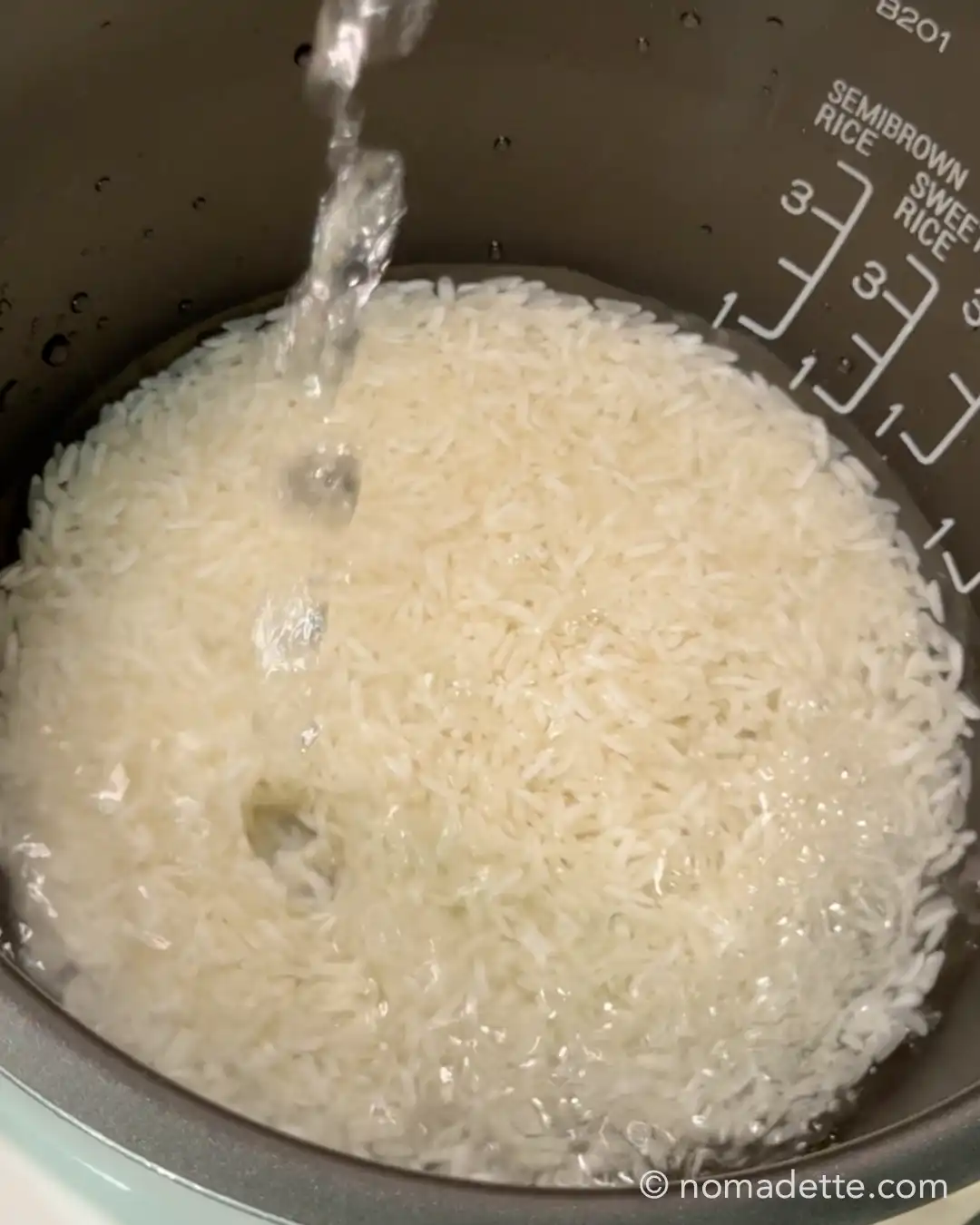
Measure your rice, rinse it thoroughly, and add to the rice cooker water. Top up with water. Follow the indicator line on your rice cooker, if available. Otherwise, follow the standard 1:1 white rice to water ratio.
2. Top with Proteins and Vegetables

Add all of your proteins and vegetables to the pot. Today I’m using diced chicken, mushrooms and carrots. Make sure to
I’m also adding kimchi here, which is going to add so much flavour to the bibimbap as it’s cooking away.
I also have spinach, but I’m adding it later on – you can also add it in at this stage if you don’t mind leafy veggies that are a little too wilted.
3. Cook!
Put the lid down, and turn the rice cooker on! Let the rice cooker work its magic.
4. Make the Bibimbap Sauce
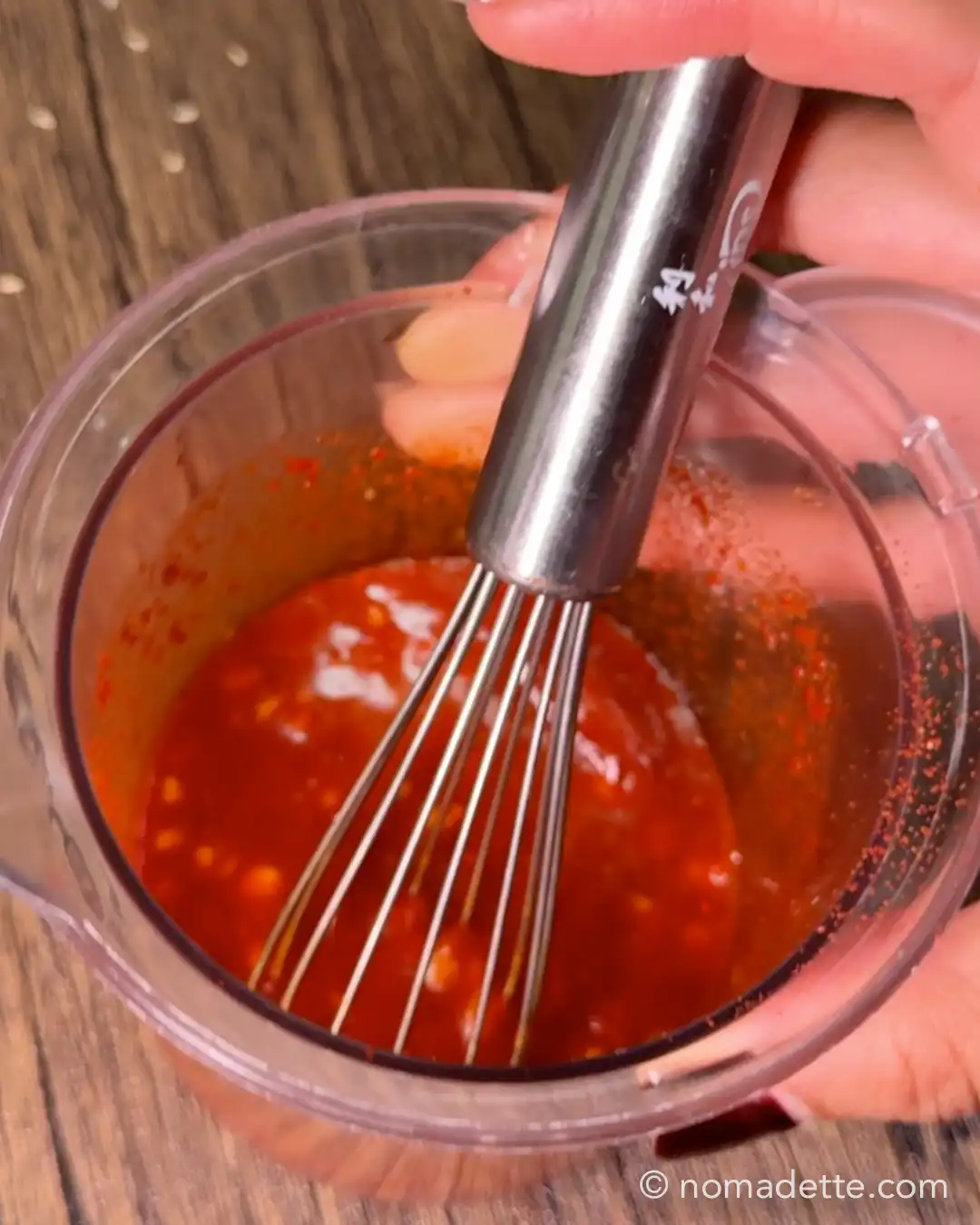
While the rice cooks, combine all of the ingredients in a separate bowl.
Crack eggs into a bowl for later.
5. Add Leafy Veggies (optional)
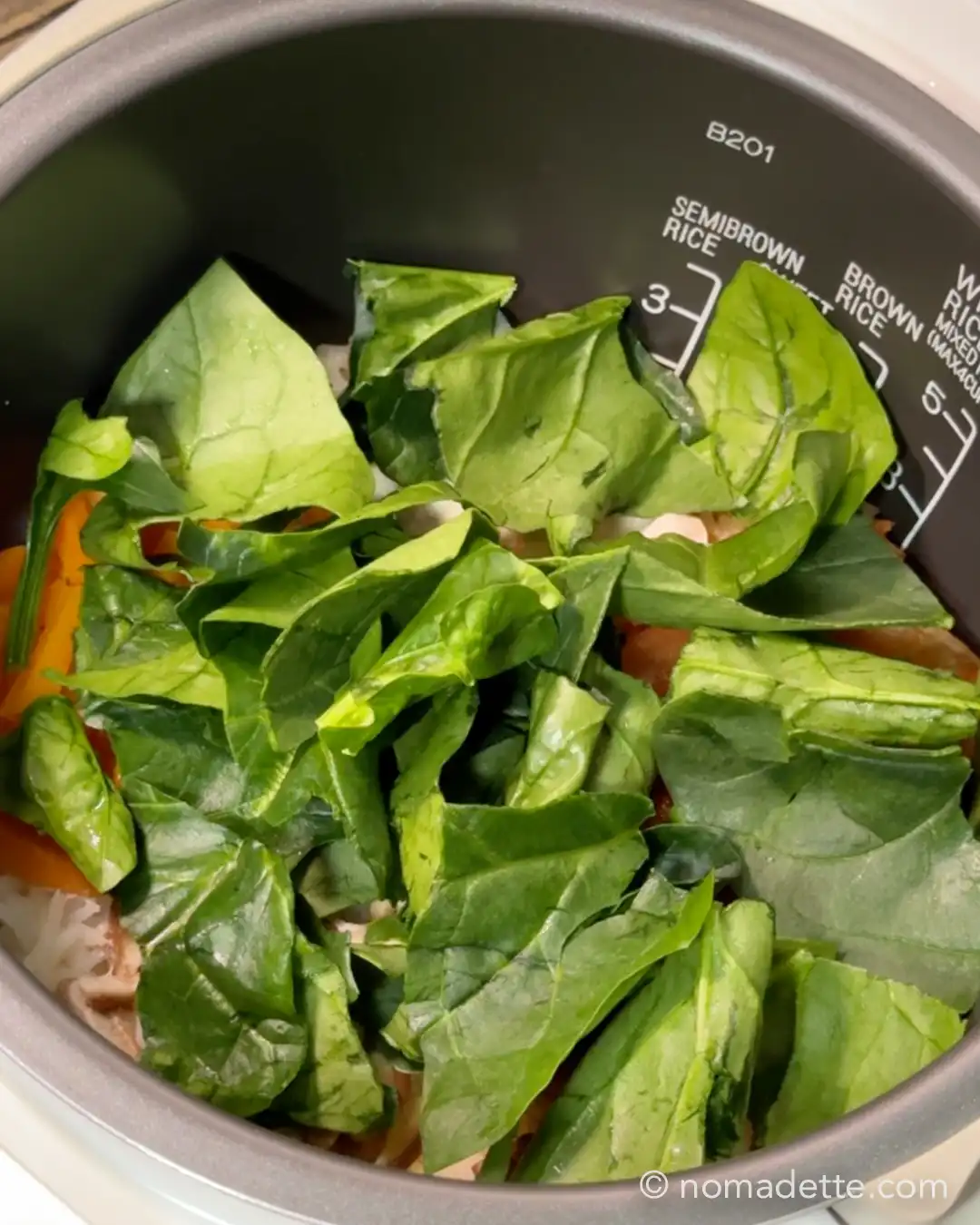
At the last 5 minutes before your rice is done, open the lid – careful of the steam – and add your leafy vegetables of choice!
My rice cooker has a timer to indicate the last few minutes. If your rice cooker does not have this functionality, simply guess! When your rice cooker starts to emit some steam, this is usually indication that it’s almost at the end of the cooking stage
6. Combine!

Once the rice cooker is done, immediately open the lid – again, careful of the steam! – and add the raw eggs, sesame seeds, spring onions and finally, the pièce de résistance – the gochujang sauce!
Grab your rice paddle, and combine everything together until you have a final bibimbap dish. Serve and enjoy!


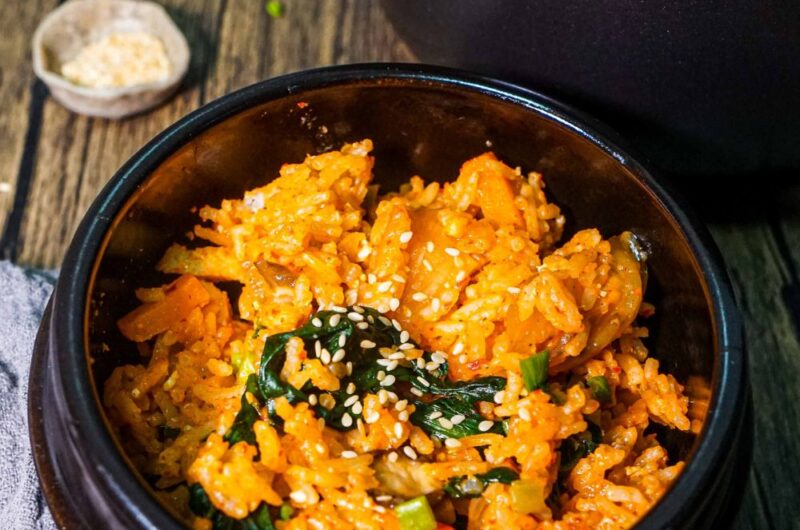

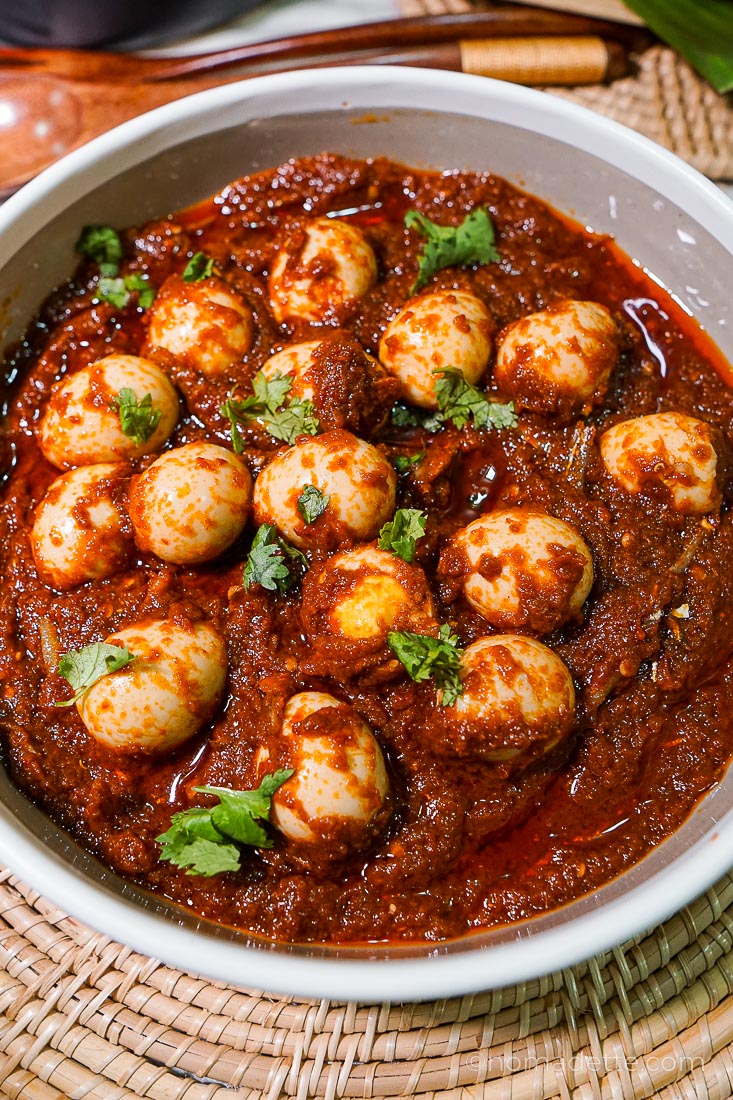

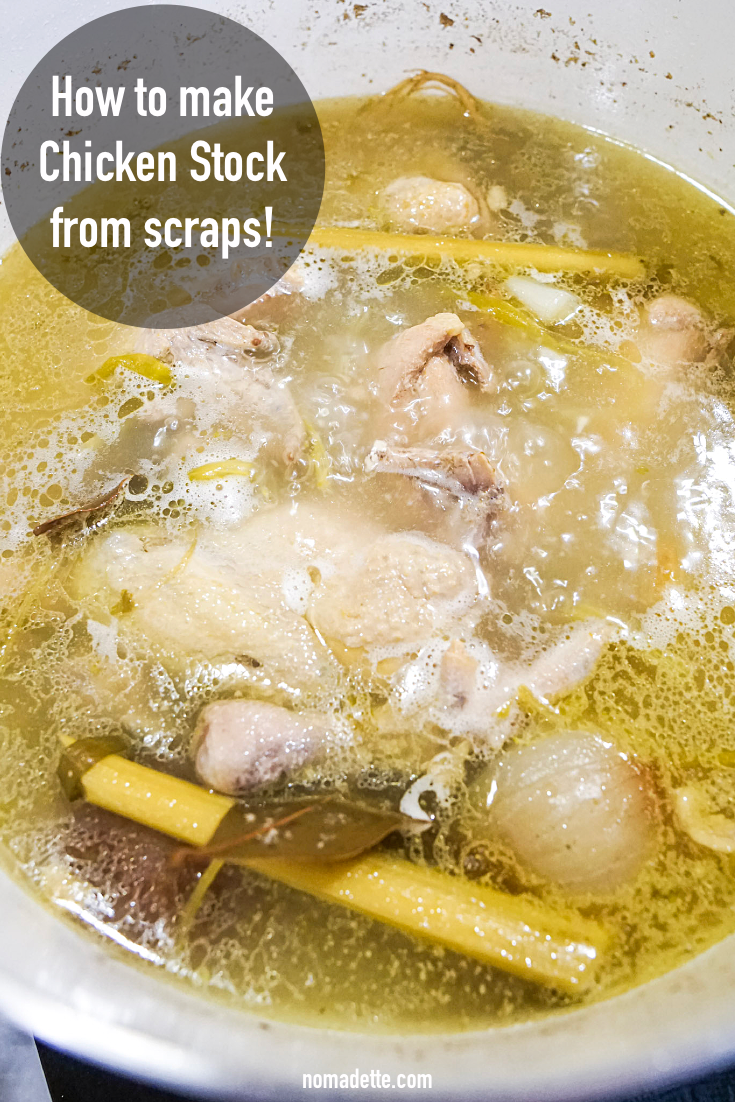
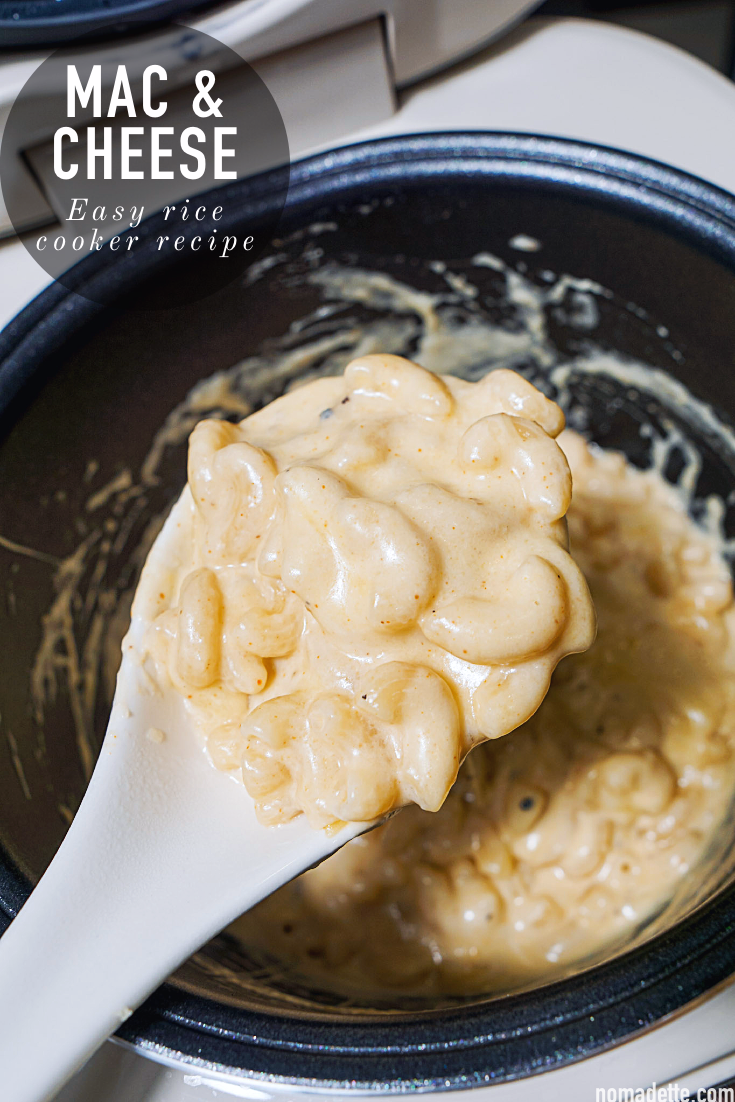
This sounds delicious. But I don’t have a rice cooker. I do have an instant pot. Any idea how I can adapt this to the instant pot? Or to the stovetop?
Hi Aj! If you’ve made rice in the instant pot, this recipe will be a breeze and easily adaptable. Double the amounts in the recipe here at least, the instant pot is too large to just cook 1 cup of rice.
Follow the directions exactly, except change the timings as per instant pot. Once the pressure is released, carefully open the lid. Add leafy vegetables (I recommend using a quick-cook one like spinach), and place the lid back on for another 5 minutes, making sure the mode is on Warm. Once veggies are cooked, immediately add egg (you can even add this with the leafy vegetables if you want the eggs more cooked), garnish and mix to combine!
I will definitely try this! Being constantly tired coming home from work, this sounds like a very easy and healthy recipe I can use both for dinner and/or lunch for the following day!
Just a question, as for the spinach, do you think it would be ok to put them in frozen together with everything else? I’m not too sure about the timing.
I absolutely feel you with cooking ANYTHING after a long work day! You can dump in frozen spinach with the rest of the ingredients at the beginning of the recipe (unlike in the last few minutes), and it will heat/cook in time with everything else.
If you have a bitttt more energy, and don’t want to deal with overly cooked spinac, just give the frozen spinach a quick rinse under water to thaw. Place over a colander to drain any excess liquid while the rice is cooking. Then add at the last 5-10 mins as per recipe to heat it through!
This is so far from bibimbap that it is simply insane to call it this…. this is a steamed pot of stuff with some gochujang…🤣… that being said, it doesn’t sound bad.